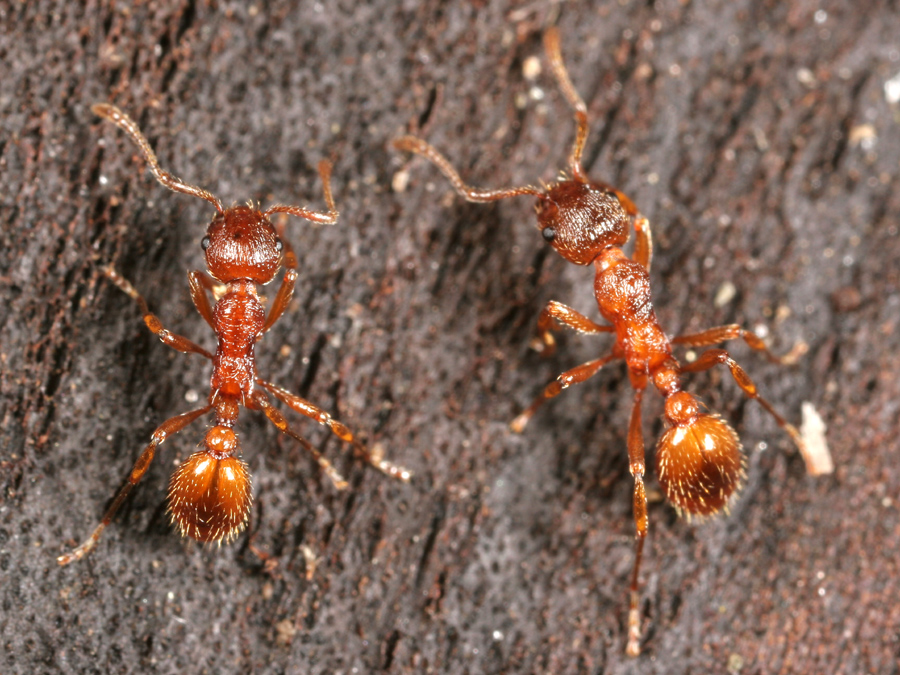European Fire Ant

European Fire Ant
(Myrmica rubra)
Tags: Terrestrial
Identification and Reproduction
Identification:
- The European fire ant is a small red to brownish red ant that can be identified by its two waist segments, our native ant only has one.
- The worker ants are about 0.5 cm long and the queens measure a bit larger.
- It has two backward pointing spines and a stinger (visible with a magnifying glass).
- Please note that the European fire ant is not the same as the Southern fire ant (which is often the "fire ant" that comes up when you do internet searches.) Recommended management techniques may differ between the species. Please refer and confirm European fire ant identification here, written by Dr. Higgins at Thompson Rivers University or sending him samples to confirm.
Reproduction:
- From egg hatch to egg production, queens take at least two years to start a colony.
Habitat & Ecology
- European fire ant nests can be difficult to spot as they do not build obvious mounded nests, but prefer humid environments including in the soil and along roots of trees or shrubs, under rocks, logs, and in decaying wood or other rotting debris.
- They prefer wet conditions where water tables are high and areas with high rainfall.
- In general, they nest in managed and frequently watered lawns and gardens.
Impacts
- European Fire Ants will forage on herbaceous plants, shrubs and trees in combination with insect, larvae and other invertebrate.
- When disrupted, the ants will deliver a painful sting which has in a few cases produced severe allergic reactions to the venom, including anaphylactic shock.
- They also displace native ants.
Management
If you do have European fire ants, management for these ants can be tricky. Remember - these ants can have MANY nests, and any missed nests can simply re-infest your property. Make sure you find all of them, and continue monitoring for any new nests!
- Avoid attracting European fire ants into your home and yard by properly storing and disposing of all food and waste.
- Make sure any rotting debris or yard waste is not left sitting in moist areas.
- Avoid moving or disposing soil, plants or debris that have ants present. This may accidentally introduce European fire ants to a new location.
-
If you do not wish to control these ants on your own - you can contact insect and other pest management companies and inquire if they manage for European fire ants (it would be useful to make sure they are aware of the difference between European fire ants and other biting ants).
Resources
For further details on European Fire Ant control please refer to the Metro Vancouver Best Management Practices for European Fire Ants (pg. 10-17)
Download the Metro Vancouver Factsheet on European Fire Ant here.
For more information on how to identify the European fire ant check out the University of Florida's data page on European fire ants here.
For further details on how to control small populations of European fire ants please refer to Dr. Robert Higgins page here.
Download BC's Invasive Alert on European Fire Ants here.
Header photo (Aiwok).




